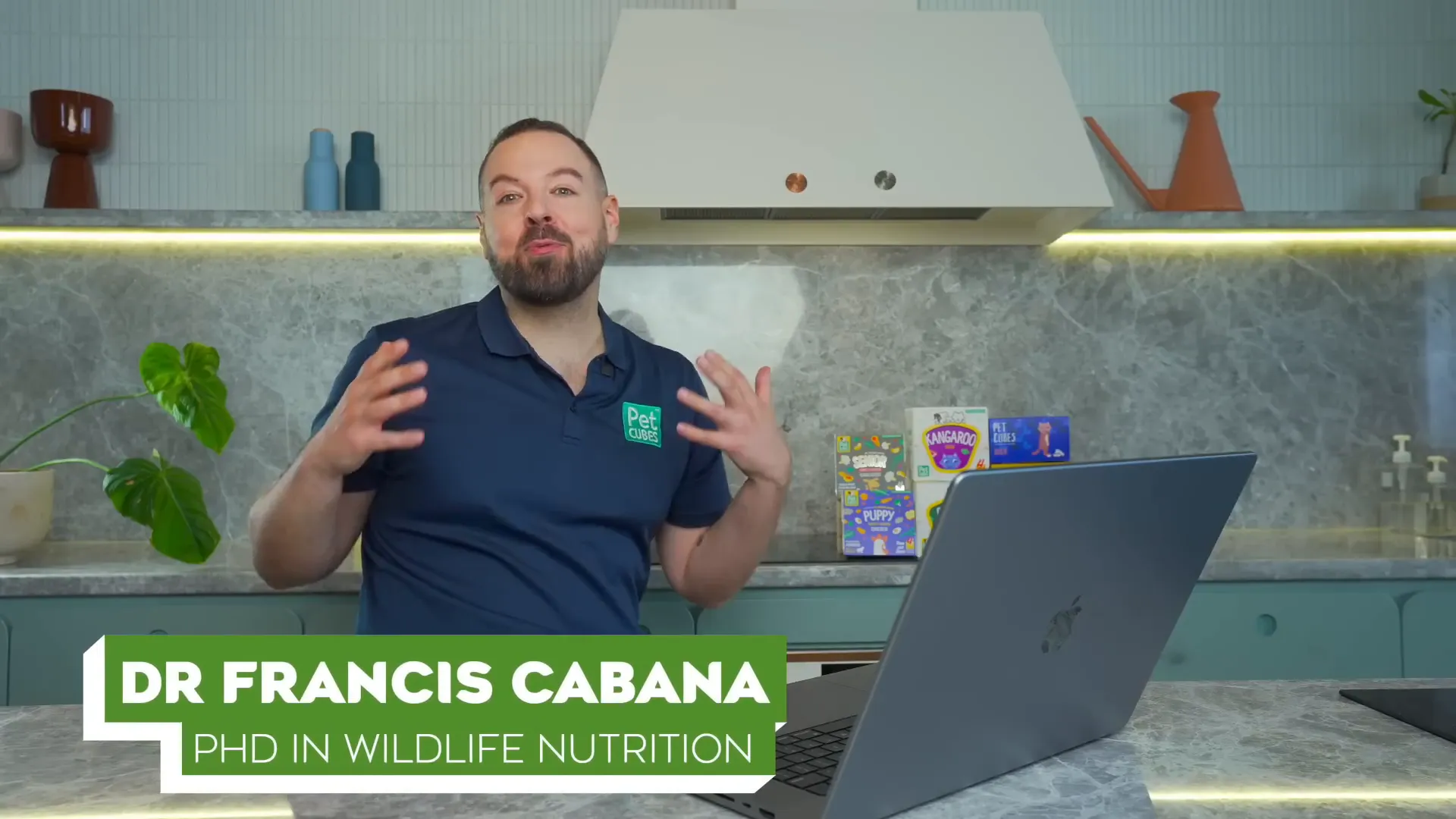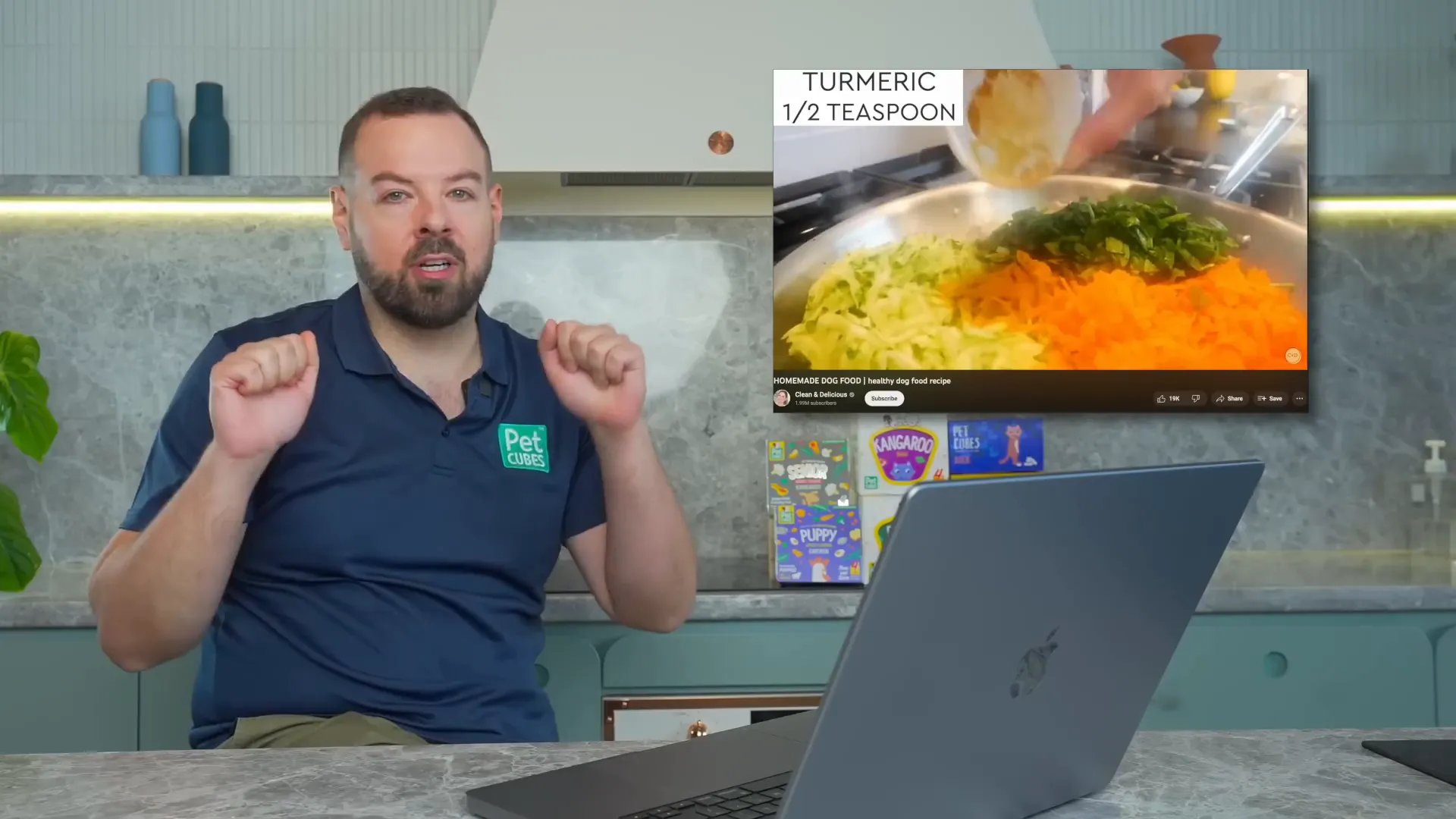When it comes to feeding our beloved pets, especially dogs, many of us want the best. The rise of home cooked dog food recipes on YouTube and other platforms has inspired countless pet owners to ditch commercial kibble in favour of fresh, homemade meals. But how safe and nutritionally complete are these recipes? In a revealing and candid analysis by Dr Francis Cabana, a world-renowned wildlife nutritionist, we dive deep into one of the most viewed homemade dog food recipes on YouTube. This article breaks down the recipe, evaluates its nutritional soundness, and provides expert advice to help you make informed decisions about your dog’s diet.

Table of Contents
- 🔍 Understanding the Recipe and Its Popularity
- ⚠️ Critical Nutritional Concerns and Misconceptions
- 🔥 Cooking Techniques and Digestibility
- 🥕 The Role of Vegetables, Spices, and Herbs
- 🍚 Carbohydrates in Home Cooked Dog Food
- ❗ Vet Approval vs. Nutritional Completeness
- 📦 Storage and Serving Suggestions
- 🥄 Enhancing Your Dog’s Diet Safely
- 🚫 Why This Recipe Falls Short as a Complete Diet
- ✅ Tips for Safe and Balanced Home Cooked Dog Food
- 📚 Frequently Asked Questions (FAQ) About Home Cooked Dog Food
- 🔚 Conclusion: Feeding Your Dog with Care and Knowledge
🔍 Understanding the Recipe and Its Popularity
The recipe under review has gained massive attention online, promising a simple, balanced, and easy-to-make meal for dogs. The video creator, Dani, shares her motivation: if her family is eating clean and nutritious food, why shouldn’t her dog Charlie?
Dani’s recipe includes the following key ingredients:
- Ground turkey (1 pound)
- Shredded vegetables (zucchini, carrots, baby spinach)
- Turmeric and a pinch of black pepper
- One egg
- Three cups of cooked brown rice (or white rice)
The method involves sautéing the turkey in coconut oil, adding the vegetables and spices, cooking until tender, stirring in a cracked egg, and finally mixing in the cooked rice. The end result looks like a dog-friendly fried rice.

⚠️ Critical Nutritional Concerns and Misconceptions
While the recipe seems wholesome at a glance, Dr Francis highlights some major concerns. First and foremost, the recipe is not nutritionally complete. It lacks essential nutrients such as calcium, omega-3 fatty acids, zinc, copper, and iron. These are vital for maintaining your dog’s health over the long term.
Another common misconception addressed is about foods dogs cannot eat. Dani mentions onions, garlic, kale, and grapes as harmful, but Dr Francis clarifies that garlic and kale are generally safe in moderation. Grapes and raisins, however, are toxic and must be avoided.
More importantly, the recipe’s heavy reliance on carbohydrates, especially rice, echoes the nutritional profile of commercial kibble, which many owners try to avoid by cooking at home. Feeding such a carb-heavy diet without balancing proteins and fats adequately can be detrimental to your dog’s health.

🔥 Cooking Techniques and Digestibility
The cooking method used is sautéing the ground turkey thoroughly until it is fully cooked. Dr Francis points out an interesting fact: cooking meat medium rare or gently cooked retains better digestibility compared to fully cooking it through. Overcooking can reduce digestibility by up to 10%, which impacts nutrient absorption.
For eggs, the recipe cracks a raw egg into the pan after turning off the heat. While this adds protein and healthy fats, the ideal way to prepare eggs for dogs is to have the egg white fully cooked while keeping the yolk runny, as this maximises nutrient digestibility. Poaching eggs is the recommended method for this.
🥕 The Role of Vegetables, Spices, and Herbs
Including vegetables like zucchini, carrots, and spinach adds fibre, vitamins, and minerals to the diet. The recipe also incorporates turmeric and black pepper, which have anti-inflammatory and digestive benefits. These are excellent additions to a dog’s diet when used correctly.
However, salt is not recommended in dog food, and Dani’s recipe wisely avoids adding any. Using herbs and spices like turmeric in moderation can be beneficial, but it’s important to avoid toxic plants or excessive amounts.

🍚 Carbohydrates in Home Cooked Dog Food
Rice, primarily brown rice in this recipe, serves as the carbohydrate base. While carbohydrates provide energy, the quantity here is quite high—three cups per batch, which results in a carb-heavy meal similar to kibble.
Dr Francis questions the rationale behind creating a fresh food diet that mirrors the carbohydrate load of commercial diets, which many dog owners try to avoid due to concerns over obesity and other health issues. Balancing carb intake with adequate protein and fat is crucial.

❗ Vet Approval vs. Nutritional Completeness
Dani mentions having her vet approve the recipe, which may provide reassurance to some. However, Dr Francis warns that vet approval alone does not guarantee nutritional completeness. Veterinary professionals may not always have specialized training in animal nutrition, and recipes should ideally meet standards set by organizations like NRC (National Research Council), AAFCO (Association of American Feed Control Officials), or FEDIAF (European Pet Food Industry Federation).
The recipe in question does not meet these standards and lacks critical nutrients, making it unsuitable as a sole diet for any dog. This highlights the importance of consulting veterinary nutritionists or using scientifically formulated recipes to ensure your pet’s diet is balanced and safe.

📦 Storage and Serving Suggestions
Dani suggests storing the cooked food in an airtight container in the refrigerator, where it lasts for a few days, or freezing it for up to three months. This is a practical tip for pet owners who want to batch cook meals and save time.
Dr Francis agrees with making larger batches to avoid constant cooking but stresses the importance of ensuring each batch is nutritionally balanced and complete.

🥄 Enhancing Your Dog’s Diet Safely
Adding fresh whole foods like shredded carrots, apples, scrambled eggs, or a dollop of plain full-fat Greek yogurt to your dog’s existing diet can be a great way to boost nutrient intake and variety. These additions can improve palatability and provide beneficial nutrients without risking imbalances.
However, transitioning to a fully homemade diet requires careful planning and consultation with experts to avoid deficiencies or toxicities.

🚫 Why This Recipe Falls Short as a Complete Diet
Despite the wholesome ingredients, this recipe is not suitable as a standalone diet. It lacks:
- Calcium – essential for bone health
- Omega-3 fatty acids – important for skin, coat, and brain health
- Trace minerals like zinc, copper, and iron – vital for immune function and overall metabolism
Feeding this recipe exclusively could lead to serious nutrition-related health issues over time. Dr Francis strongly advises against using such incomplete recipes without supplementation or professional formulation.
✅ Tips for Safe and Balanced Home Cooked Dog Food
- Research Thoroughly: Understand which foods dogs can and cannot eat. Reliable sources and veterinary nutrition books are invaluable.
- Use Formulated Recipes: Look for recipes that follow NRC, AAFCO, or FEDIAF guidelines or are created by qualified veterinary nutritionists.
- Consult Professionals: Speak to your vet or a veterinary nutritionist before making major diet changes.
- Supplement Wisely: Ensure calcium and essential fatty acids are included, either through foods or supplements.
- Batch Cook and Store Safely: Prepare meals in advance and store them properly to maintain freshness and nutrient integrity.
- Monitor Your Dog’s Health: Regular check-ups and blood work can help catch any nutritional deficiencies early.
📚 Frequently Asked Questions (FAQ) About Home Cooked Dog Food
Q1: Is homemade dog food always better than commercial kibble?
Not necessarily. Homemade meals can be fresh and free from preservatives, but they must be nutritionally balanced. Many homemade recipes lack essential nutrients that commercial diets are formulated to provide. Always ensure homemade meals meet your dog’s nutritional requirements.
Q2: Can I feed my dog garlic and kale?
Garlic and kale in small amounts are generally safe for dogs and can have health benefits. However, large quantities of garlic can be toxic, so moderation is key. Grapes and raisins, on the other hand, are toxic and should never be fed.
Q3: How can I make sure my homemade dog food is complete?
Use recipes developed or approved by veterinary nutritionists, follow established nutritional standards, and consider supplements for calcium, omega-3s, and trace minerals. Regular vet check-ups can help ensure your dog remains healthy.
Q4: How long can I store homemade dog food?
Refrigerated homemade dog food typically lasts 3-4 days in airtight containers. For longer storage, freezing portions for up to three months is recommended.
Q5: Is it okay to mix homemade food with commercial kibble?
Yes. Mixing homemade meals as a supplement or topper with a balanced commercial diet can improve nutrient diversity and palatability. Just ensure the combined diet meets your dog’s nutritional needs.
Q6: What is the best way to cook eggs for dogs?
Poaching eggs so the whites are fully cooked but the yolk remains runny is ideal for digestibility. Scrambled eggs are also a good option, but avoid raw eggs due to potential enzyme interference and bacterial risks.
Q7: Can I freeze homemade dog food?
Yes, freezing homemade dog food in portions is a convenient way to store meals for up to three months, preserving freshness and nutrients.
Q8: What are the risks of feeding an unbalanced homemade diet?
Risks include nutrient deficiencies leading to bone problems, weakened immune system, skin and coat issues, and overall poor health. Severe imbalances can even be life-threatening over time.
Q9: Should I add spices or herbs to my dog’s food?
Some spices and herbs like turmeric and parsley can be beneficial in small amounts. Avoid toxic plants like onion and excessive salt. Always research and consult before adding new ingredients.
Q10: How can I find reliable homemade dog food recipes?
Look for recipes from certified veterinary nutritionists or trusted pet nutrition sources. Books, academic resources, and veterinary clinics often provide or recommend trustworthy recipes.
🔚 Conclusion: Feeding Your Dog with Care and Knowledge
Homemade dog food can be a wonderful way to nourish your pet with fresh ingredients and tailored meals. However, as Dr Francis Cabana’s detailed review shows, not all recipes available online are safe or nutritionally complete. The stakes are high when it comes to pet nutrition—feeding an imbalanced diet can cause serious harm.
Before switching to home cooked meals, do your research, consult professionals, and choose recipes that meet established nutritional standards. Consider supplements to fill nutrient gaps and always monitor your dog's health closely. Adding fresh foods to commercial diets can be a great start, but a fully homemade diet requires careful planning.
Remember, your dog relies on you to provide the best fuel for a happy, healthy life. By combining knowledge, care, and a bit of culinary effort, you can achieve just that.
For more expert advice and pet nutrition insights, stay informed and always prioritise your furry friend’s wellbeing.
This article was inspired by the PhD Nutritionist Reacts to Home-Cooked Dog Food YouTube video with all credits going to the creator.

























